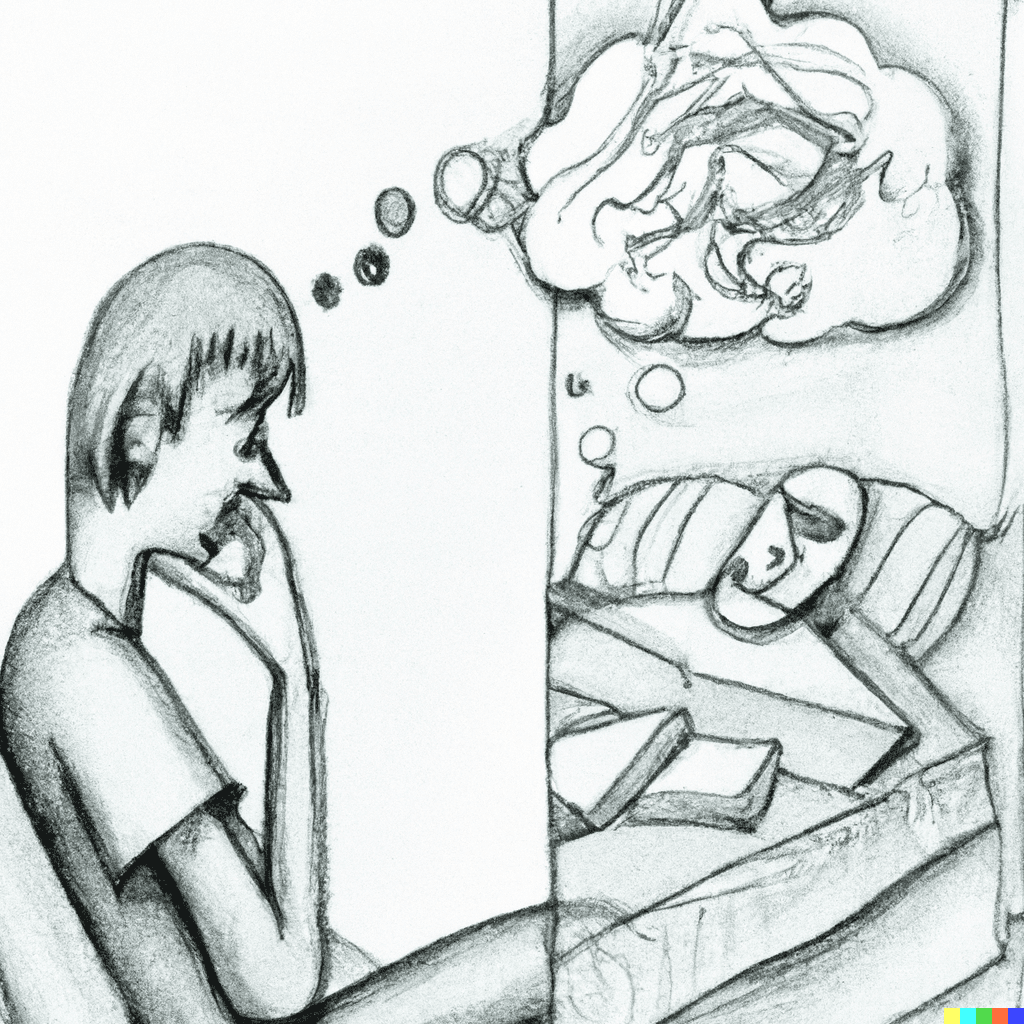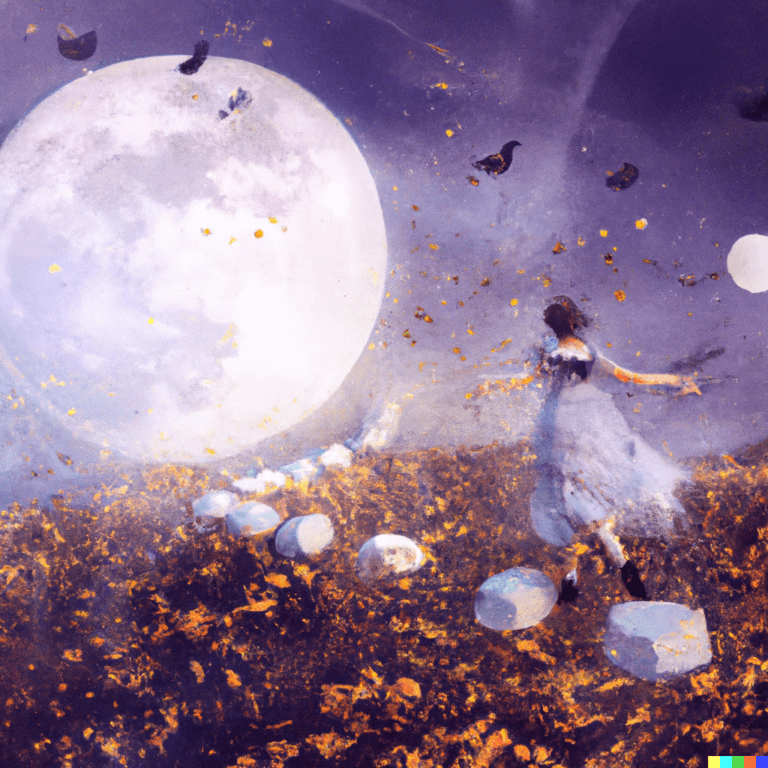Dreams are a natural phenomenon that occurs during sleep, characterized by a series of thoughts, images, emotions, and sensations that unfold in the mind’s eye. They are a universal experience, transcending cultures and time, and serving as a connection to our subconscious selves. Dreams have captivated the human imagination since time immemorial, playing a vital role in shaping our personal lives, societies, and even artistic creations. They offer us an opportunity to explore our deepest fears, desires, and aspirations, often revealing hidden aspects of our psyche. By understanding and interpreting our dreams, we can gain insights into our emotional well-being, mental health, and the direction our lives may be taking.
This article aims to delve into the mysterious world of dreams, shedding light on the various types of dreams that people experience and their significance. We will explore the science behind dreaming, how culture and spirituality shape our understanding of dreams, and their connection to creativity. Furthermore, we will touch upon the latest research and technological advancements in the field of dream studies. In doing so, we hope to foster a greater appreciation for the enigmatic realm of dreams and encourage readers to embrace their personal dreamscapes with curiosity and wonder.

The Neuroscience of Dreams
Sleep is a complex and dynamic process, comprising several stages that cycle throughout the night. These stages include non-rapid eye movement (NREM) sleep and rapid eye movement (REM) sleep. NREM sleep is further divided into three stages: N1, N2, and N3. Each stage is characterized by distinct brain wave patterns, muscle activity, and eye movement. Dreams primarily occur during the REM stage when brain activity is at its peak, resembling that of wakefulness.
Dreams are a product of intricate brain activity, involving various regions working in tandem to create vivid and immersive experiences. Key players in the dreaming process include the amygdala, which is responsible for processing emotions; the hippocampus, which plays a role in memory consolidation; and the prefrontal cortex, which is involved in higher cognitive functions such as decision-making and self-awareness. During REM sleep, the brain’s activity and neural connections help to create the rich tapestry of our dreams.
Memories and emotions play a crucial role in shaping our dreams, as they provide the content and context for the scenarios that unfold. Dreams often draw upon our personal experiences, incorporating elements from our daily lives, past events, and even our deepest fears and desires. The emotional tone of a dream can be influenced by our waking emotional state, with heightened feelings of stress, anxiety, or happiness carrying over into our dreams. Furthermore, dreams can also serve as an emotional release, allowing us to process unresolved emotions and conflicts in a safe and symbolic environment.
Common Types of Dreams
Daydreams are spontaneous and involuntary thoughts that drift away from the present moment, often involving imaginary scenarios or pleasant experiences. They typically occur during periods of low cognitive demand and can last anywhere from a few seconds to several minutes. Daydreams serve various purposes, such as providing a mental escape from boredom or stress, fostering creativity, and helping to plan future actions. However, excessive daydreaming can lead to a decrease in productivity and impair focus on daily tasks.
Lucid dreams are a unique type of dream where the dreamer becomes aware that they are dreaming while still immersed in the dream. This awareness grants the dreamer a degree of control over their dream environment and actions. There are several techniques for inducing lucid dreams, such as reality testing, mnemonic induction of lucid dreams (MILD), and wake-induced lucid dreaming (WILD). The potential benefits of lucid dreaming include personal growth, enhanced creativity, and therapeutic applications. However, some risks, such as sleep disruptions and confusion between reality and dreams, may arise.
Nightmares are vivid and distressing dreams that evoke strong negative emotions, such as fear, anxiety, or sadness. They can be caused by a variety of factors, including stress, trauma, or certain medications. To cope with nightmares, individuals can employ techniques such as relaxation exercises, addressing the underlying stressors, or seeking professional help if they become disruptive to daily life.
Recurring dreams are dreams that repeat the same theme or scenario multiple times, often indicating unresolved emotional or psychological issues. Common themes in recurring dreams include being chased, falling, or losing teeth. The interpretations of these dreams can vary depending on the individual and their specific experiences. Psychological explanations for recurring dreams often point to unresolved conflicts, repressed emotions, or unfulfilled needs.
Prophetic dreams, also known as precognitive dreams, are believed to predict future events or reveal hidden information. Throughout history, numerous accounts of prophetic dreams have been documented, such as Abraham Lincoln’s dream of his assassination. However, from a scientific perspective, prophetic dreams are often attributed to coincidence, selective memory, or the unconscious mind piecing together subtle cues and information that the conscious mind may not have noticed.

Cultural and Spiritual Interpretations of Dreams
Ancient cultures placed great importance on dreams, viewing them as messages from the divine, omens, or windows into the hidden realms of the mind. For instance, ancient Egyptians believed that dreams were messages from the gods and provided guidance for daily life. In ancient Greece, dreams were seen as a means of communication with the gods, and dream interpretation played a significant role in their society, with dream interpreters offering insights into the meaning of dreams and their potential implications.
Dream symbolism varies across cultures, reflecting their unique values, beliefs, and experiences. For example, in Native American cultures, dreams often involve animals and nature, symbolizing different aspects of life and spiritual connections. In Chinese culture, dreams may be interpreted based on the principles of yin and yang, with each symbol in the dream representing either positive or negative energies.
The role of dreams in religion and spirituality is evident in numerous traditions around the world. In Christianity, dreams are considered a means through which God communicates with individuals, with many biblical accounts of prophetic dreams shaping the course of history. Similarly, in Islam, dreams are seen as a way for Allah to communicate with the faithful, and dream interpretation is a respected practice in Islamic culture. Hinduism and Buddhism also acknowledge the spiritual significance of dreams, with some teachings suggesting that dreams can provide insights into one’s spiritual path or help to resolve karmic issues.
Modern dream interpretation theories encompass a wide range of perspectives, from psychological to spiritual. Sigmund Freud’s psychoanalytic theory suggests that dreams represent the fulfillment of repressed desires and unfulfilled wishes. Carl Jung, on the other hand, saw dreams as a way for the unconscious mind to communicate with the conscious mind, revealing hidden aspects of the self and offering guidance for personal growth. More contemporary theories, such as the activation-synthesis hypothesis, propose that dreams are a byproduct of the brain’s attempts to make sense of random neural activity during sleep. Regardless of the interpretation, dreams continue to captivate and mystify, inspiring exploration and self-discovery.

Dreams and Creativity
Dreams have long been a source of inspiration for many famous creative works throughout history. For example, Mary Shelley’s iconic novel, “Frankenstein,” was conceived in a vivid dream that she experienced during a stormy night. Similarly, the melody for The Beatles’ classic song “Yesterday” came to Paul McCartney in a dream, while Salvador Dalí’s surreal painting, “The Persistence of Memory,” was influenced by his dreamscapes.
Dreams can also play a significant role in problem-solving, as they provide a unique environment where the mind can freely explore ideas and scenarios without the constraints of reality. Many notable inventions, scientific discoveries, and breakthroughs have been attributed to insights gained through dreams. For instance, the chemist Friedrich August Kekulé discovered the structure of the benzene molecule after envisioning a snake biting its tail in a dream. Likewise, Indian mathematician Srinivasa Ramanujan claimed that his groundbreaking formulas were revealed to him in dreams by a Hindu goddess.
Harnessing dream creativity requires attentiveness to one’s dreams and a willingness to explore their potential. Techniques for tapping into this creative wellspring include keeping a dream journal to record and analyze dreams, practicing lucid dreaming to gain more control over dream content, and using visualization or meditation techniques to encourage specific dream themes or scenarios. By cultivating an awareness of our dreams and fostering a curiosity about their potential, we can unlock a treasure trove of creative insights and inspiration.

Dream Research
Current research and studies on dreams continue to uncover new insights into the nature and function of dreams, as well as their impact on our mental health and well-being. Researchers are exploring topics such as the role of dreams in memory consolidation, emotional regulation, and creative problem-solving. Additionally, studies are investigating the potential therapeutic applications of dream analysis for treating conditions such as PTSD, depression, and anxiety.
Technological advancements in dream analysis have opened up new possibilities for understanding and exploring our dreams. Devices such as sleep trackers and EEG (electroencephalogram) monitors can provide valuable data on brain activity during sleep, offering researchers a glimpse into the neurological processes behind dreaming. Furthermore, advances in artificial intelligence and machine learning have led to the development of algorithms capable of analyzing dream content and patterns, opening new doors for large-scale dream research and personalized dream interpretation.
Future possibilities for dream exploration are vast and exciting. As technology continues to evolve, we may one day be able to decode and visualize dreams, allowing us to literally “watch” our dreams like movies. This could lead to new forms of entertainment, therapy, or even communication. Additionally, advancements in virtual reality and brain-computer interfaces may enable us to consciously interact with our dreamscapes, blurring the lines between dreams and reality. As we continue to unravel the mysteries of dreams, we will undoubtedly discover new ways to harness their power, enhance our understanding of the human mind, and enrich our lives in ways we have yet to imagine.

Final Thoughts on Dreams
Throughout this exploration of dreams, we have delved into the various types of dreams, such as daydreams, lucid dreams, nightmares, recurring dreams, and prophetic dreams. We have also touched upon the cultural, spiritual, and psychological aspects of dreams, as well as their connection to creativity and problem-solving.
Understanding and exploring our dreams can provide valuable insights into our emotional well-being, mental health, and personal growth. By paying attention to our dreams and seeking to interpret their meanings, we can learn more about ourselves, our fears, desires, and aspirations. Moreover, the continued study of dreams has the potential to unlock new therapeutic applications, enhance our creative abilities, and deepen our understanding of the human mind.
As we continue to unravel the mysteries of dreams, we encourage you to embrace the enigmatic realm of your own dreamscapes with curiosity and wonder. By cultivating an awareness of your dreams and fostering a spirit of exploration, you can unlock a treasure trove of personal insights and inspiration that will enrich your life in ways you have yet to imagine.



















